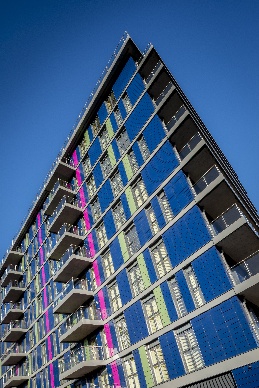You are viewing 1 of your 1 free articles
Facing the future: Network Housing Group profile
Network Housing Group is collapsing its group structure and has doubled its surplus and built more homes than ever. Peter Apps meets Helen Evans to find out how, and what went wrong with its proposed deal with Catalyst

“In the short-term, the pain on both sides was too much,” says Helen Evans, chief executive of Network Housing Group.
Ms Evans is speaking publicly for the first time about her organisation’s decision not to proceed with a proposed merger with fellow London landlord Catalyst. After revealing talks had reached “the next stage” last November, the deal was dropped in June.
It was just one of several ‘mergers of equals’ in the housing association sector to fall apart after months of talks over the last year – including Asra and Viridian, which dropped them entirely, and Symphony and LMH, who indefinitely “paused” talks last month.

“Too much pain on both sides” - Helen Evans, Network chief executive
Ms Evans says the reason for ending talk of the Network/Catalyst deal was the simple complexity of bringing two large businesses together.
“It was always going to require a lot of change on one side or the other, or both,” she says. “What initially looked like it would take 18 months, actually would have taken two or three years. During that period services are disrupted, staff are disrupted… In the end, both boards took the view that the degree of pain could not be justified.”
She says this complexity is a common problem for large mergers, and may potentially see other “behemoths” who are currently discussing mergers struggle to complete the deals.
But as the talk of a merger recedes, Network finds itself looking towards an uncertain future with some confidence, having just completed arguably the most successful 12 months in its 41-year history.
The 19,000-home landlord has just announced a surplus of £49.2m for the 2014/15 financial year – more than double the £23.2m it booked in 2013/14. It also completed 1,200 homes in the year, its biggest ever development programme.
The increased surplus was a result of increased turnover (up to £189m from £156m) along with downward pressure on costs, which rose only marginally compared to the increased surplus from £90.8m to £93.8m.
This was achieved partly through the ongoing collapse of Network’s famously complex group structure. A group formed of three housing associations spanning East Hertfordshire, Lambeth and Brent, as well as a web of subsidiaries, is being merged into a single organisation with a single group board, taking £5m in annual costs out of the organisation.
“We had to negotiate it,” says Ms Evans. “We had safeguards in place which convinced the boards the things that were important to them would be protected – customer services, local scrutiny of service, development in their local area.”
The single group board had its first meeting in May, and the legal amalgamation will complete next April - subject to the necessary consents.
She says the new structure creates “a unity of purpose and ease of decision-making”. It also leaves Network well placed to deal with the impact of the social rent cut.

“We are not in a position where we have to make immediate cost reductions to survive,” she says.
She says the target is “efficiencies” of around £500,000 per year, to be met through reducing legal costs and consultancy fees. The landlord also hopes to push on with its development ambitions without much alteration.
It plans 600 homes for outright sale by 2018, which will help fund 1,200 affordable – currently split down the middle between low-cost rent andhomeownership products.
“We – and our board – remain absolutely committed to development. Within our capacity we will find a way to continue,” she says.
In contrast to some landlords in the current climate, the affordable rent element remains a key part of this: “If we are asked to shift tenure in favour of shared ownership, we will do that. But our board wishes to continue to develop low-cost rented housing, and that’s something we will always do.”
She forecasts “significant demand” for Right to Buy – estimating that between 5% and 10% of the association’s tenants might take it up in the early years of the scheme, despite the high cost of housing in London.
“My experience having worked in local authorities, even when valuations are quite high, a number of people find a way to do it,” she says. However, she is confident the impact could be cash positive, depending on the replacement costs.
UPDATE: At 10.50pm on 1.10.2015
This story was updated to make it clear that the collapse of Network’s group structure is still an ongoing process, due to legally complete in April next year.











